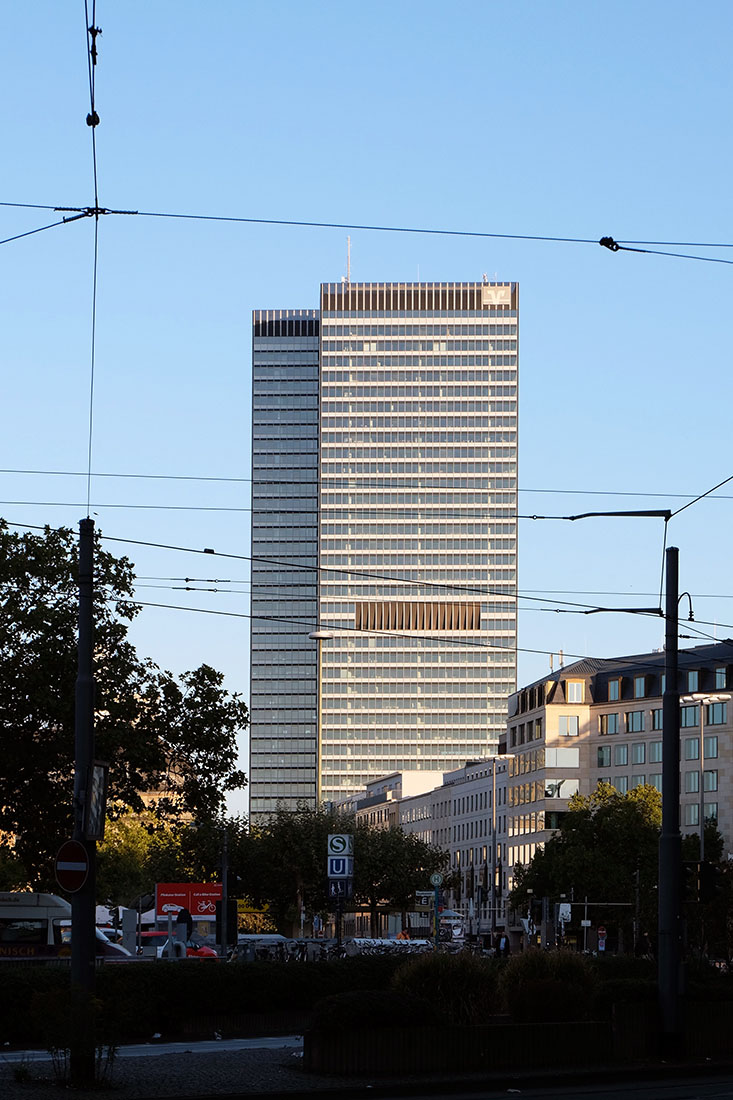 |
 |
 |
 |


City Skyscraper
Platz der Republik, Frankfurt
1971 - 1974
In the seventies the City Tower Building, also known as Selmi high-rise, was as a symbol of the city destruction. Although no existing buildings
had to be destroyed for the construction, since the land had lain fallow for a long time since the end of the war. But the client of this project,
the persian investor Ali Selmi, was considered one of the leading land speculators of his time. A police radio station planned on the upper floors,
the heigt totaling 143 meters (an enormous dimension for that time) and the dark facade of bronze coated sunscreen windows
and panels in anodized hard aluminum increased the aversion to the "black giant". As on August 23 1973, at the peak of the urban warfare movement,
a fire broke out on the 38th floor and the firefighters needed eight hours to reach the source of fire because of a lack of elevators,
the converged local residents welcomed the fire with applause and chants. The local newspaper "Frankfurter Allgemeine Zeitung" wrote of
thousands of spectators and a festival atmosphere. Incendiarism was however later identified as least likely cause of the fire, obviously a defective
welding machine was the cause of the fire. This fire is considered to be the beginning of modern fire protection in germany.
The tall building, designed by Johannes Krahn and Richad Heil, finished eight months after the mentioned fire, reminds the Seagram Building in New York of Ludwig Mies van der Rohe.
It consists of two highrise volumes offset one against the other. The building is a reinforced concrete structure. It consists of a centrally arranged core
with dimensions of 17.4 × 14.2 m m. The two staggered storey wings are each 40 meters long and 14.1 meters wide. The vertical loads are carried
by the core as well as of four internally arranged supports per tract. The standard floors have a height of 3.2 m. The foundation of the skyscraper
consists of an up to 4.15 m thick floor slab with an area of circa 2,000 m². At mid-height of the building were windowless floors for the technical rooms.
These floors distinguished themselves in the facade as a broad horizontal separation strip. In the years 2006 - 2008 the building was renovated by
Christoph Mackler Architects. The original exterior skin of the building has then been replaced by a more uniform lighter glass facade.
The restoration not only changed the appearance of the building, but also resulted in a significant reduction in energy consumption.